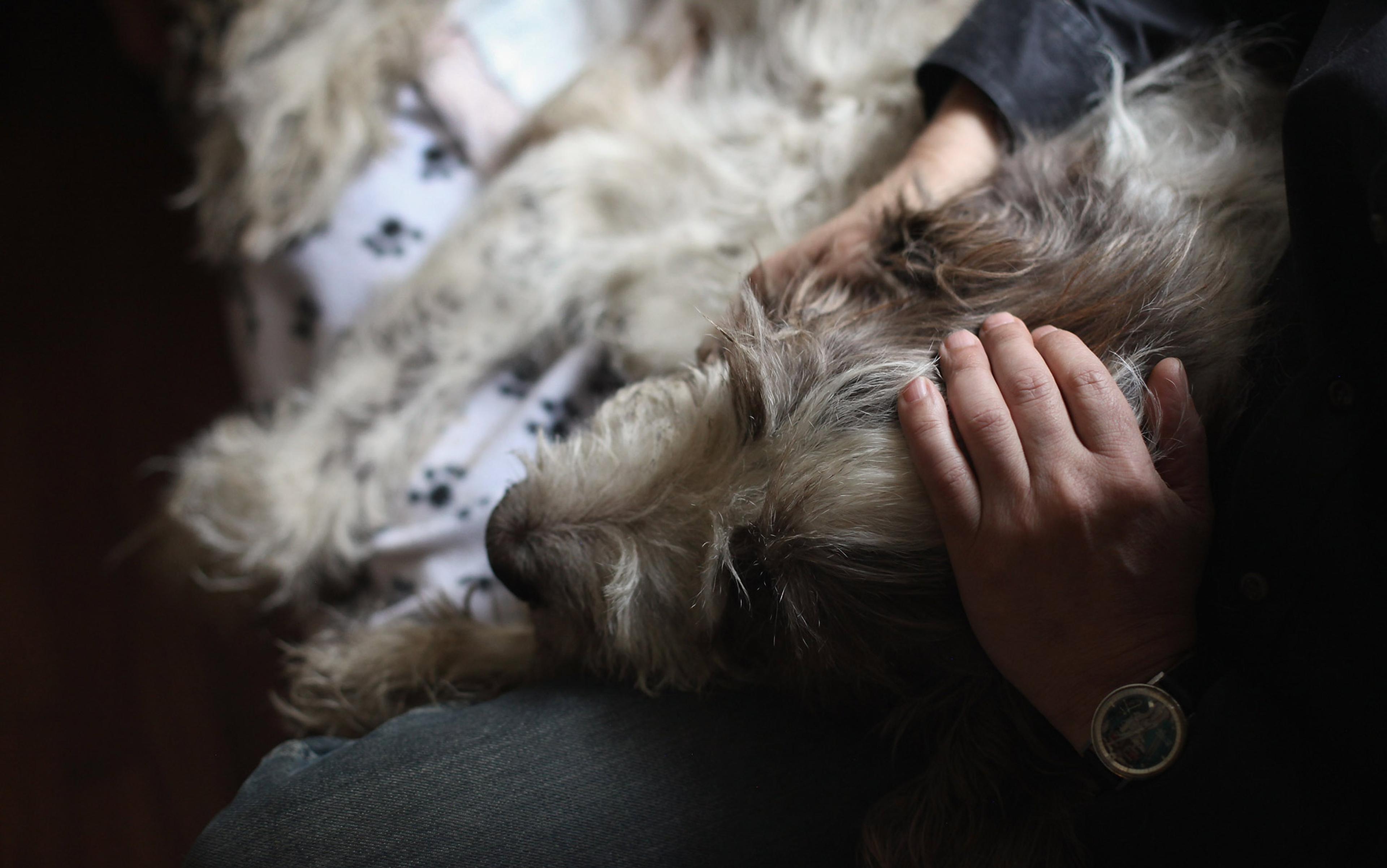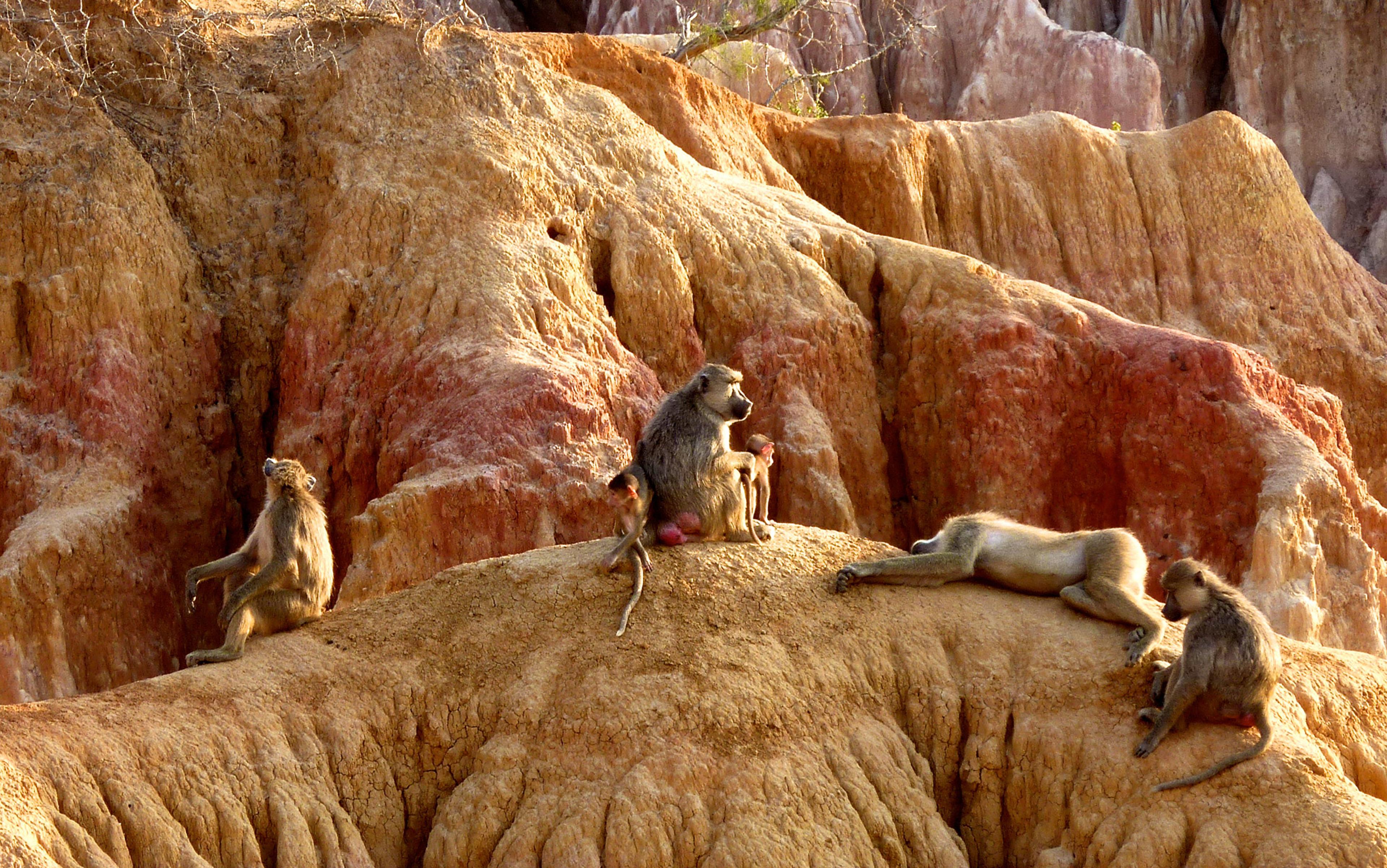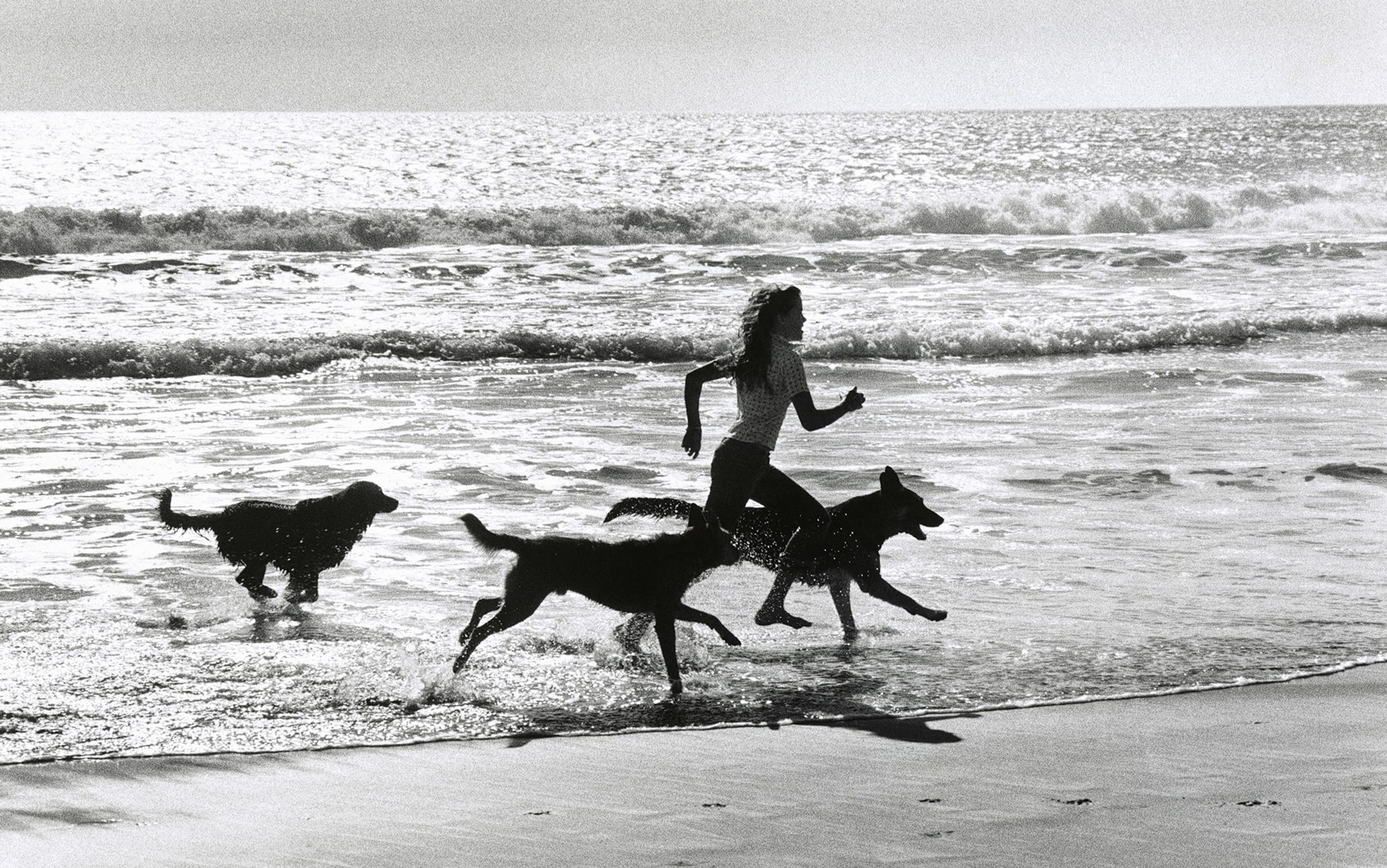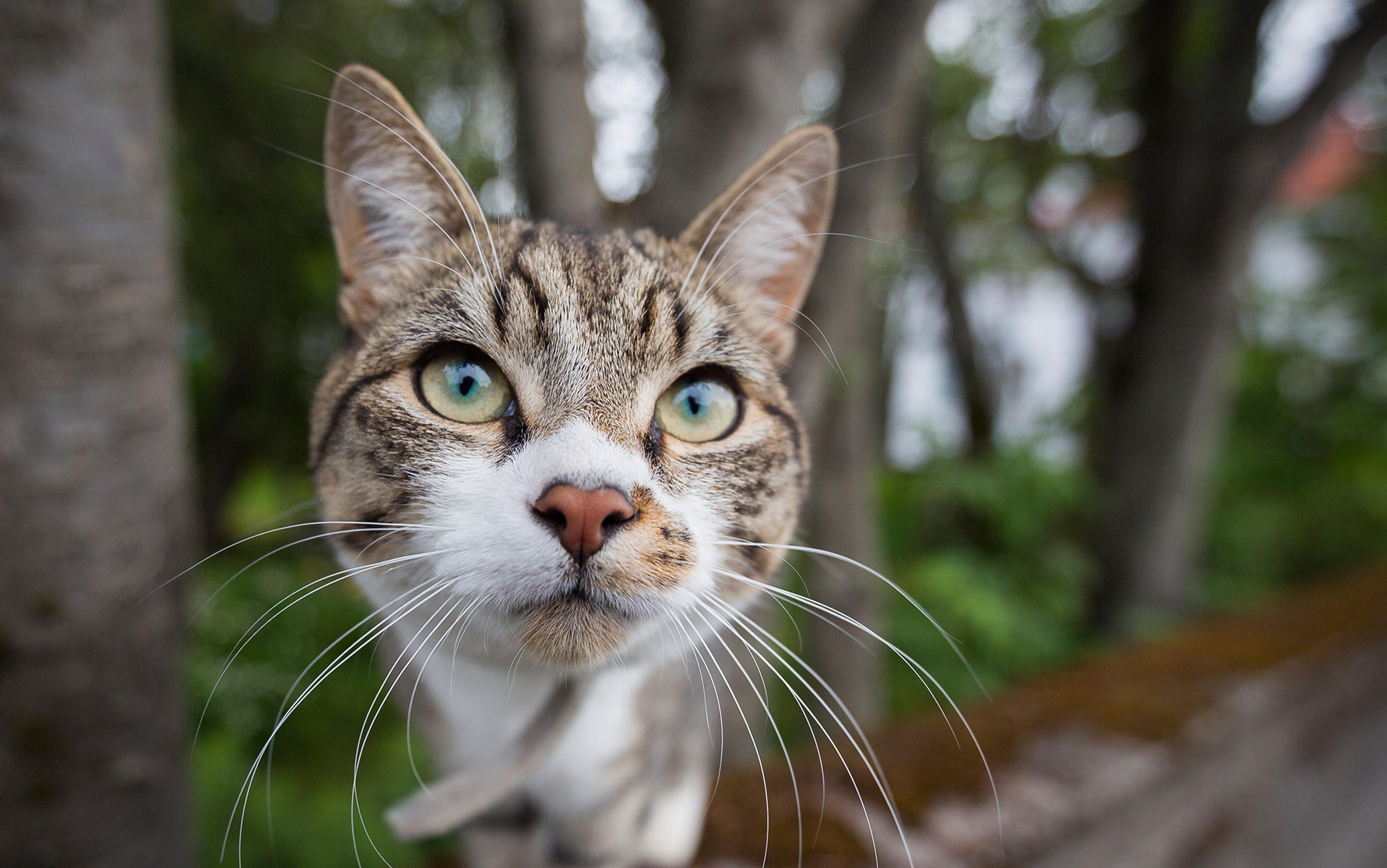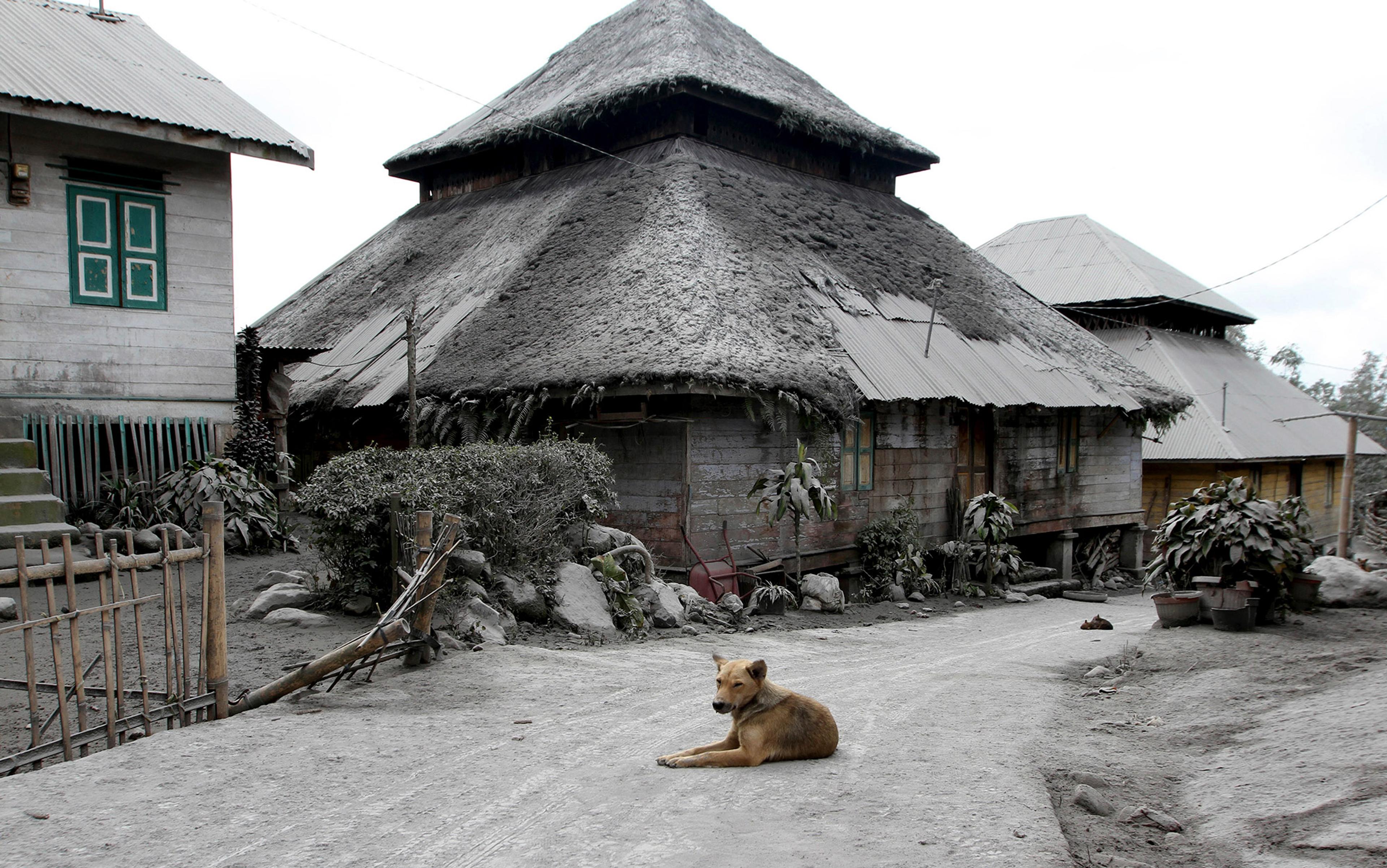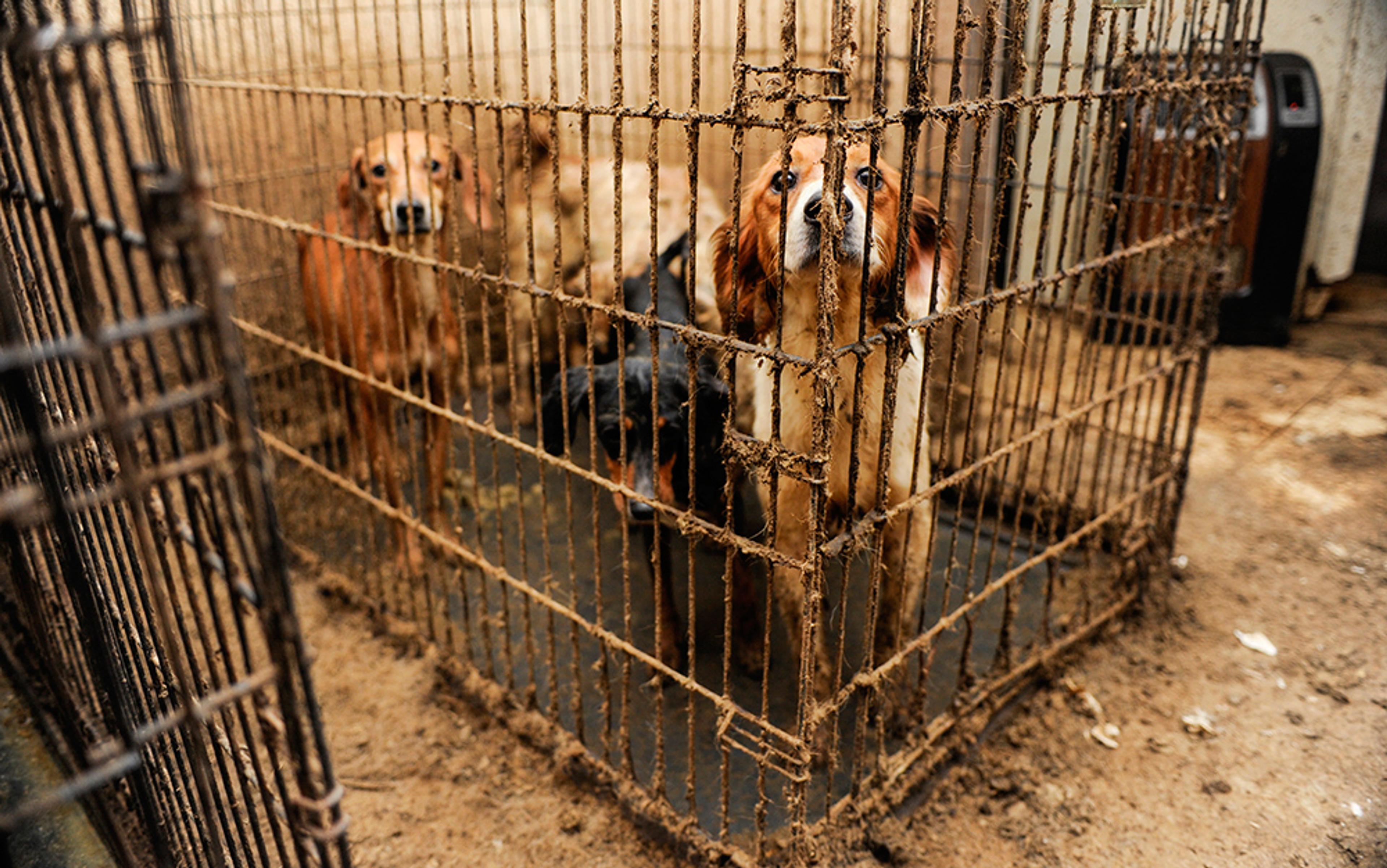‘It’s time to think about saying goodbye.’
We tend to avoid straight talk about death and killing. Still, the phrase the vet had chosen to broach the subject of euthanising our cat struck me as especially evasive. When I was a child in the 1970s, pets were ‘put down’. Today, even this phrase sounds harsh, despite its obliqueness. It then became more common to talk of putting the animal to sleep, as though death were as gentle and pleasant as a good nap. ‘Saying goodbye’ takes euphemism to new extremes, removing any sense of agency, as though their parting were an event that simply happened.
We soon did ‘say goodbye’ to Pixel and it hurt to do so. Our news elicited stories from others of deep mourning for their pets. One said he was ‘in pieces for days’, a phrase that resonated with my partner, who cried more than I had ever seen her do before. There is nothing phoney about our professed love for our pets.
Although it felt more like bereavement for a person than the loss of a thing, the death of a pet isn’t exactly like either because our relationships with our animals is unlike any other. We are close to our animals while at the same time being worlds apart, unable to truly understand what it is like to be a member of their species. Our ties with them can be deep and involve reciprocity but they are also full of asymmetries. We value their lives greatly but not usually in anything like the same way as we do those of our fellow humans. Those who genuinely put their pets on the same level as other people are rightly considered eccentric, if not monstrous.
Thinking of our pets as family occludes the deep tensions that are present throughout our lives with them. Reflecting on Pixel’s passing brought these to the fore. It made it clearer than ever that, although we can have incredibly strong bonds with animals, they are not our friends. We can value their lives intensely but when their number is up, no matter how hard it hits us, I don’t think it is the awful event the death of a fellow human is. Thinking about my relationship with Pixel shed light on our relationship to nature more widely, as well as the difficulty of seeing it for what it is, in all its splendour and cruelty.
The evolution of the way we talk about pet euthanasia reflects profound changes in attitudes towards domestic animals. Affection for selected animals goes back centuries. In pre-18th-century Britain, keeping a pet was seen as a frivolous, effeminate indulgence. The Victorians made animal ownerships respectable, in part because it was seen as a good way to instruct children in the importance of taking care and responsibility.
This was accompanied by an increased concern for the welfare of working animals. The modern world’s first animal welfare charity, the Society for the Prevention of Cruelty to Animals, was founded in London in 1824. Initially, it focused on beasts of burden, like the pit ponies who worked down the coal mines. By 1840, Queen Victoria had become a patron of the charity and it was allowed to add ‘royal’ to its name, so becoming the renowned RSPCA we know today.
By the end of the century, some were even giving their pets burials. In 1881, a Maltese terrier called Cherry was interred in the back garden of Victoria Lodge in Hyde Park in London, by permission of the gatekeeper, Mr Winbridge. Others followed, and the plot organically grew into the country’s first pet cemetery. Paris can claim to have the modern world’s first purposely created nonhuman cemetery, the Cimetière des Chiens (Cemetery of Dogs), opened in 1899.
The cemetery’s primary purpose was to stop people throwing their dead dogs into the River Seine
Writers and artists were at the vanguard of increasing awareness of the wrongness of animal suffering. William Hogarth’s series of printed engravings The Four Stages of Cruelty (1751) drew an explicit connection between cruelty to animals and moral depravity. The first depicts a child, Tom Nero, torturing a dog. In the second, the grown-up Tom beats his horse. All this paves the way for robbery, seduction and murder, for which he is hanged. In the final print, his carcass is publicly dissected.
However, attitudes to animals were still much more hard-nosed than they are today. Some of the most popular pets were birds, kept in tiny cages without any evident worries about what this meant for their welfare. Cats were valued primarily as pest-controllers and only secondarily as companions. Paris’s pet cemetery was at least as much of a public health measure as it was a sign of sentimentality. Its primary purpose was to stop people throwing their dead dogs into the River Seine.
A striking illustration of the limits of human concern for their pets came as the Second World War was looming over Britain in 1939. The newly formed National Air Raid Precautions Animals Committee issued a notice, ‘Advice to Animal Owners’. The committee was concerned that, if there were food shortages, pets would consume precious calories needed for humans. So they advised that, if it was not possible to move the animals to the country, ‘it really is kindest to have them destroyed.’ No niceties of ‘putting down’ here, just the brutal ‘destroyed’. The pamphlet even contained an advertisement for a captive bolt pistol: ‘The standard instrument for the humane destruction of domestic animals.’ The public willingly obliged without protest and, in the space of around a week, 750,000 animals were killed. Perhaps more surprisingly, the committee’s members still included the RSPCA and the People’s Dispensary for Sick Animals.
Fast-forward to the Russian invasion of Ukraine in 2022, and the scene is very different. Not only did families fleeing bombs take their pets with them – they found the idea of abandoning or killing them inconceivable. ‘This dog is like a child to me,’ Yevheniia Soldatenko told The Guardian after driving 2,500 km through Moldova, Romania, Hungary and Slovakia to Poland with her pet and nine-year-old son. ‘She loves us very much, and we love her very much.’ According to one estimate, more than half of Ukrainian refugees brought pets with them.
Our increased tendency to treat our pets as family members is clearly not a British idiosyncrasy. When I was a child visiting relatives in Italy, dogs were working animals, often openly kicked and beaten, while cats were sometime indulged but never let inside. Pet food was almost nonexistent. Now, more than half of Italian families have at least one pet, despite the fact that a similar proportion live in apartments. Around 90 per cent of Britons and Australians, and 77 per cent of Americans view their cats and dogs as family. Pet ownership has been rising globally for many years. In China alone, the pet population rose by 113 per cent in just five years between 2014 and 2019.
This transformation is astonishing but also somewhat puzzling. How can it be that a mere 100 years ago most people were willing to put down their pets in a (literal) shot if that was the practical thing to do? How can something so intimate and visceral as our depth of feeling for our pets be so completely changed by a shift in culture? After all, human, cat and dog nature haven’t altered.
It’s important to take this question seriously since it challenges assumptions we currently have about the right way to think about other animals. There are many different ways in which human beings have related to the creatures they live with, work with, hunt and farm. To those who become used to it, each one feels like the only right and natural way.
We could tell ourselves a comforting story in which treating animals like family is a sign of moral progress. But there are myriad other ways in which people have shown even greater respect for animals, some that even contemporary Westerners find difficult to make sense of. For instance, the Maasai have an intimate sense of kinship with the animals that they nonetheless kill and eat. Like many other East African pastoralists, they share names with their favoured ox and refer to each other by these cattle names. The Maasai also refer to themselves as a people using their word for cattle, inkishu. And yet this respect and sense of connection, which goes far deeper than anything a Western city-dweller can imagine, does not always translate into what we would think of as humane treatment. In ritual killings of cattle, the animal is either stabbed or suffocated to death by smothering its mouth and pouring milk and honey mead down its nostrils.
We are not ‘pet parents’, companions or owners, but we are their keepers
The example of the Maasai suggests that those who have the most intimate relationship with other animals both identify closely with them and see them as fundamentally different. They respect them but not as they respect people. They revere them but they slaughter them, not always as painlessly as possible. The ways in which all traditional societies have related to animals reflect how we humans are deeply embedded in the natural world, the kin of all living creatures. But they also recognise that every living creature is different and occupies its own place in the web of interdependence. To think of them all as friends and family would be naive and romantic. To recognise the value of nonhuman life for what it is requires acknowledging its real difference.
Donna Haraway’s writings on human relationships with dogs stress how the value of such interactions depends on recognising these deep differences. Dogs teach us how to interact with ‘significant otherness’. In her book The Companion Species Manifesto (2003), she decries the ‘dangerous and unethical projection in the Western world that makes domestic canines into furry children’. The miracle of human-dog interaction is that it involves genuinely ‘intersubjective’ communication, without either party really understanding what it is like to be that other kind of subject.
Contra Haraway’s warning, current dominant attitudes to our pets seem to be designed to hide or erase these differences. We are no longer ‘pet owners’ but cohabiters with ‘companion animals’. This, we think, confers more dignity on the animals than considering them as property. But the choice is not between seeing other animals as friends or objects. Here again traditional societies can teach a few lessons. Ideas of ownership tend to be less important or are even absent in pre-industrialised communities. More central are ideas of stewardship. We are custodians of the land and animals that we bring under our own use. Nature grants us the right to use them but not to abuse them.
Our domestic animals should be seen in the same light. We are not ‘pet parents’, companions or owners, but we are their keepers. A cat or a dog is not a piece of property that we can use as we wish. But nor is it another member of the family, or a being that has chosen to be our friend. It is an animal that we have taken stewardship of, enjoying what it offers us, and treating it with respect and care in return.
Importantly, this relationship is entirely asymmetric. We loved our cat but it would be stretching it to say he loved us. Pixel sought out our company when it suited him and didn’t seem to miss it when we went away. He was very happy to take advantage of a warm lap but never as a favour to us who liked to stroke him. He had no responsibility at all for our wellbeing while we had total responsibility for his.
Of course, some relationships with family members share some of these asymmetries, such as with a newborn baby, a senile parent or a severely disabled adult. But all these relationships are part of a wider framework of human relations in which ideals of reciprocity and equality are central. Other animals sit completely outside of this. Their difference from us is what makes the unique and wonderful kind of relationship we have with them possible.
Most philosophical writing about animals over recent decades has focused on the challenge to the absolute moral distinction that has historically been made between humans and other species. Utilitarianism, which claims that our moral duty is to increase good states of affairs and decrease bad ones, promotes this argument. Its founder, Jeremy Bentham, realised in the 19th century that if any animal can feel pain – which surely almost all can – then any moral philosophy that sought the reduction of the total amount of pain must take their welfare into account. In the 1970s, Richard D Ryder coined the term ‘speciesism’ to describe the discounting of a creature’s welfare purely on the basis of it being nonhuman. Peter Singer later made the concept famous.
The argument that other animals are sentient and intelligent and that therefore we have a moral duty to consider their interests is unanswerable. However, that does not mean we should treat them exactly as we do other humans. Morality requires us to treat others according to their own natures and circumstances, not identically. So we should resist the temptation to replace an unwarranted anthropocentrism with a misguided anthropomorphism. Like us, animals have thoughts and feelings, but it does not follow that they have thoughts and feelings just like ours.
Octopuses share enough with us to treat them with respect but at the same time they are utterly alien
Jacques Derrida tried to capture something like this thought in his neologism animot. He was looking for a word that challenged the homogeneity implied by the catch-all term ‘animal’. His animot is ‘Neither a species nor a gender nor an individual, it is an irreducible living multiplicity of mortals,’ he wrote in ‘The Animal That Therefore I Am’ (2002). ‘We have to envisage the existence of “living creatures”, whose plurality cannot be assembled within the single figure of an animality that is simply opposed to humanity.’
Peter Godfrey-Smith’s work on animal minds makes the profound heterogeneity of animal lives vividly clear. His best-known work concerns octopuses. These extraordinary animals have around 500 million neurons, about the same number as a dog. But the way in which they are arranged is very different from a mammal’s. They are much more distributed around the octopus’s body, so much so that each arm has a high degree of autonomy. Octopuses are curious, good at solving problems, able to recognise individual human beings and develop relationships with them. Yet most species live for barely a year and die soon after producing offspring. They share enough in common with us for us to recognise the need to treat them with respect, but at the same time they are utterly alien.
Godfrey-Smith asks us to ‘strike a balance between treating our minds’ – and those of other animals – ‘as too private and mysterious to make scientific sense of at all, and treating them as less private and mysterious than they really are.’ In a similar vein, trying to describe his very real bond with his late dog, Sophie, Simon Glendinning wrote: ‘I no more wish to regard other animals as “basically the same” as human beings … than I want to regard them as “essentially distinct” from us.’
One of the most remarked-upon differences between humans and the animals we live with is that they are much more ‘in the moment’. Cats and dogs do not have projects or ambitions. Pixel may have wanted to catch a mouse at a given moment but it would be unwarranted anthropomorphic speculation to suggest he ever went to sleep plotting how to catch one tomorrow. (He might have dreamed of catching mice, but dreaming isn’t planning.) If pets have memories, they are not of the kind they brood over, either in nostalgic reminiscence or regret.
Such claims invite the reply: how do you know? We don’t have access to the inner reaches of our pets’ minds. So why be so sure that they don’t spend time fondly recalling the best bone of their life or thinking about where they’d like their next walk to be?
If ‘how can you know’ means ‘how can you be certain’, then we can’t. But if not being certain something is false is a reason to act as though it were true, we should avoid cutting vegetables in case they feel pain, or give flies the same rights as humans, in case it turns out they’re just as psychologically sophisticated as us.
A better question is to ask what kind of mental and emotional attributes we can reasonably attribute to cats and dogs. We do this by combining our knowledge of the kinds of brains and nervous systems they have with observation. When we do this, we can safely conclude that they have a range of emotions and the ability to feel pleasure and pain. We also know they have good memories for certain things: familiar people and places, routes, hiding places and so on. These are all good reasons to take their welfare seriously.
But we have no reason at all to think that our pets have the core human capacity to see their lives as an unfolding narrative, with plans for the future and a story to tell of their pasts. Pixel never had a single project in his life, an activity that required more than one session working at it to complete. He had only tasks: catch a mouse, eat, open the door, sharpen his claws on our furniture, curl up in any empty cardboard box left open.
I am sure Pixel would have walked over our dead bodies in a heartbeat
Some pet owners may over-interpret some activities as extended projects. Animals may keep trying at something, even for weeks. A dog might start digging a hole and go back to digging it later. A cat might try more than once to do something before succeeding. But these are not activities that require us to attribute to the animals a stable and persisting plan. It is a peculiarity of how we think about our pets that people can be both attracted to the idea that their pets live entirely in the moment and offended by the limits to their mental horizons this seems to imply. To truly accept their attachment to the present requires accepting that their pets lack the long-term perspective that is essential to being human, and that they are therefore profoundly different from us.
The failure to appreciate this difference is manifest in the envy sometimes expressed for the animal’s abiding in the present. It is often said that we should be more like nonhuman animals, and that our unhappiness and stress is caused by our inability to stay in the now. But, of course, any human being who did live entirely in the present would lose an essential feature of their humanity. Imagine a person without plans, hopes, regrets, shared memories, accumulated knowledge. Such a creature might well be happier than the rest of us, but they would barely be recognisable as a person at all.
When you properly think about the temporal dimension of human existence, you see our relationship with animals differently. There is no doubt that a human being can have a long-term relationship with another animal. It can also be an emotionally rich one, on both sides. I have no reason to doubt that dogs love their keepers, in that they take pleasure from their company and feel more safe and secure around them. Many may also care for their welfare, becoming distressed if they see their human partners visibly in pain.
I’m less convinced about cats. Pixel loved us only in the sense that we provided warmth, food and perhaps some soothing physical contact. But I am also sure he would have walked over our dead bodies in a heartbeat, and was always much more disturbed by a change of territory than a change of its human occupants.
But, even with dogs, the nature of the relationship is asymmetric and totally different from the one we have with other humans. The dog feels some kind of bond with the human whom it serves obediently. This bond can endure and deepen but, unlike a human relationship, it cannot develop and evolve to the same extent. In contrast, the human side of the pet relationship can. The keeper may go through periods of being bored of having to look after the animal, irritated by its quirks, or especially grateful for its company. A human may look at their dog and think of all the things they have gone through together, but it is too fanciful to believe the dog has any remotely similar thoughts.
Our relationship with our pets is based purely on the habits of doing things together every day: walking, feeding, playing. Our relationships with other humans are like this only in extremis, when someone we love has lost most of their capacities and all we can now do is keep them comfortable. But the way that such a relationship was originally formed required a very different dynamic. Human relationships are built on shared interests, memories, swapping news. They can go through good and bad patches and are always works in progress, changing their character over time. No true human friendship is based simply on doing things together, no matter how regularly. If you never say more than hello to the bus driver who takes you to work and back every day, you don’t have a relationship in any meaningful sense. The people we meet for specific purposes, such as a regular tennis match, would not be considered friends if we didn’t at least chat a bit before or after.
Death makes the differences between how we view our pets and how they view us most stark. Any honest cat keeper will accept that their animal would not grieve for them very much, if at all. Dog owners, I suspect, are inclined to be more hopeful. And dogs may indeed respond to the sudden absence of their human walker. We would expect such creatures of habit to be discombobulated by such a separation, but to interpret this as grief is unwarranted. They would react in the same way whether their keeper were on holiday or dead.
A more realistic view is offered by Thomas Hardy in his poem ‘Ah, Are You Digging on My Grave?’ (1913). A buried corpse speculates as to who is digging above her, wondering if it is a loved one, planting commemorative rue. But her lover has already married someone else, and her kin don’t see the point of tending a grave. Nor is it her enemy, whose hate is as short-lived as others’ love. Realising it is in fact her dog, she delightfully says: ‘What feeling do we ever find / To equal among human kind / A dog’s fidelity!’ But the hound shatters her illusions:
‘Mistress, I dug upon your grave
To bury a bone, in case
I should be hungry near this spot
When passing on my daily trot.
I am sorry, but I quite forgot
It was your resting place.’
We can love our pets deeply and be distraught when they die. But we should not be under any illusions that our feelings are in any way reciprocated.
A human can treasure the bittersweet feeling of a last look over a favourite view, a final cigar, a parting hug
More importantly, while the death of an animal can be a reasonable source of deep sadness, it should not be considered a terrible event for the animal itself. That prized and celebrated ability to be entirely in the moment means the animal has not been deprived of an anticipated future. It has no dreams unfulfilled, no scores unsettled, no wrongs left to right. It was granted a finite time on Earth, and that going well is the best an animal could hope for. Exactly how many good moments it has is of little or no importance. More days means more of the same. The total quantity of pleasure it would have experienced may have increased but the overall quality of the life as a whole would not alter.
With humans, it is different. An extra year, or even month or week, can be the difference between seeing your grandchild or not, finishing a book or not, seeing a new city or not. We might also do a cherished thing one more time, experiencing it in a different way, knowing we are doing it for the last time. A human can treasure the bittersweet feeling of a last look over a favourite view, a final cigar, a parting hug. Again, it is through a temporal lens that the differences between our lives and the lives of our pets is most apparent.
When we spoke to our vet, we faced the difficult decision about when to put down Pixel. When we first took him in, it was because he had suddenly let out a horrible meow and become extremely weak and lethargic, walking only a few steps at a time before curling up in his basket. Fluid was found in his lung and, when it was removed, he seemed happy enough. But it was only a matter of time before he would soon deteriorate again and, whichever of the two suspected causes of his illness, the prognosis was bad. It seemed premature to put him down when he was still alive and content but, if we had waited for him to become seriously ill, he would have suffered more. Whatever we did, it seemed he would be leaving us too soon or too late.
The vet and her colleague were very clear that, in their view, in this kind of situation, ‘it is never too early’. Keeping him alive longer would only increase the chances of him suffering more. She didn’t say this, but the rationale presupposes that some extra days just like the ones he had already had may have added something to the ledger of his life’s quality but not enough to cancel out the debit of extra suffering at the end. When life truly is in the moment, it is always a greater priority to avoid the risk of future suffering than it is to extend life for as long as possible.
We may live less completely in the moment, but we too are finite creatures, trapped in the present, albeit able to project into the past and the future. We ought to appreciate how length is not the primary measure of a human life’s value either. A pet’s death is a reminder that we must accept that the price of a life worth living is that it comes to an end, all too soon. For cats, dogs and humans alike, at the end of our days, it matters more that we have lived than that we no longer will.
In prolonging the lives of the sick animals we love so much, we serve our own needs better than theirs
This might sound easy, even glib. But thinking about our pets shows us why it is so hard to truly believe, deep down, and does not remove the sting of death anyway. Pixel may have had no plans or ambitions, and was mercifully oblivious to the fact he was going to die. Yet there is something remarkable about any even moderately complex sentient life, which makes its passing poignant. It is wondrous to be alive, and in our pets we see lives that are wonderful in ways we can only vaguely imagine. For such a life to be snuffed out is a real cause for sadness. Something beautiful and unique is removed from the world. And if that is true, how can we pretend that our own deaths are not a legitimate source of sorrow?
To reconcile these thoughts requires an ability to hold the joy and pain of life together. There cannot be one without the other. Sometimes, we can feel both emotions at the same time. A funeral can be both a celebration of a great life and a time of deep mourning. But when we think about animals, it seems we find it harder to appreciate what the entanglement of life and death really entails.
Today, it seems more and more of us want the animal kingdom to be a world free of pain and death. It’s not just that we cannot face talking directly of euthanising our pets – even saying goodbye has become too hard. People can spend a fortune trying to keep their pets alive, often prolonging their suffering for little benefit. An acquaintance consoled us by talking about how hard he was hit when his own cat died. He admitted to spending all he could trying to save the cat, and that by the end she was suffering a lot. This made me surer that we had done the right thing by letting Pixel go earlier. In prolonging the lives of the sick animals we say we love so much, we are serving our own needs better than theirs. Furthermore, there is something obscene about spending thousands of pounds trying to extend a pet’s life when human beings are dying for lack of relatively cheap essentials.
Our attitudes to farm animals also reflect this inability to accept that length of life matters less than its quality. The horrific conditions in which the majority of the world’s farmed animals are kept is a disgrace since it gratuitously adds to the suffering in the world. But a humane farm where animals are looked after and slaughtered painlessly provides as good a life as an animal can have: safe, comfortable, well-fed and free from the horrors that befall millions of wild animals every day. To be offended by the centrality of death in this arrangement is to ignore the fact that death is central to the lives of all animals, only in the wild it tends to come more brutally. What matters is not who brings about an animal’s death or when it comes, but how good the life is up to that point.
Nature is a relentless circle of life and death in which suffering is commonplace. It treats the life that we consider to be so precious cheaply. It can be overwhelming to contemplate just how many creatures meet their end every second, each time extinguishing another world of experience. Of course we want to protect ourselves from this and, as we become closer to our pets, we want to protect them from it too. But when we get closer to animals in this way, we get further from the natural world in another. We move from awe, which is infused with fear and solemnity, to awwww!, a sentimental response to the softest, most attractive sides of the natural world.
Absence has its own ghostly presence. I still find myself expecting Pixel to appear eagerly when the rustle of a plastic packet sounds like his bag of treats, or instinctively leaving food and drink where he could not get to it. It was a privilege to have him in our lives and we miss him terribly.
But, from the day we adopted him, I knew that his life was fragile and, by human standards, short. Lamp posts are littered with signs about cats gone missing, and there had been many times when he hadn’t returned as expected and we feared the worst. I tried to receive the joy he brought without what Buddhists call grasping: the desire to hold on to good things longer than we can. We need to release our grip, letting the transient pleasures of life flow through our fingers.
So, when it came to making the decision, I felt comfortable telling the vet to go ahead. I stayed with Pixel throughout and was reassured by the gentleness of the process. From soon after the injection went in, he became increasingly dozy, and he eased into his last sleep with me gently stroking him. Knowing nothing of what was happening, it was the easiest death an animal could wish for, after a pampered and comfortable life.
But it was still deeply upsetting. My eyes started to water just writing about it. The good death of a beloved animal who has led a good life is both sad and OK. The inescapability of mortality means we have to accept it but we don’t have to feel good about it.
Our pets give us the opportunity to think about the value of life and what makes humans and other animals different. We can avoid the invitation, defy their mortality for as long as possible, imagining that cats and dogs are family members alongside brothers and sisters, mothers and fathers. Or we can accept it, taking them as examples of how it is more important to improve the quality of life than its quantity, and marvelling at how the worlds of humans, cats and dogs are radically different yet capable of intermingling. Our pets are in some ways very different from us while sharing our condition as finite flowerings of conscious experience that whither all too soon. We live most honestly and rewardingly with other animals when we recognise both our differences and similarities for what they are, neither imagining that they are just like us, nor pretending they have nothing to teach us.
